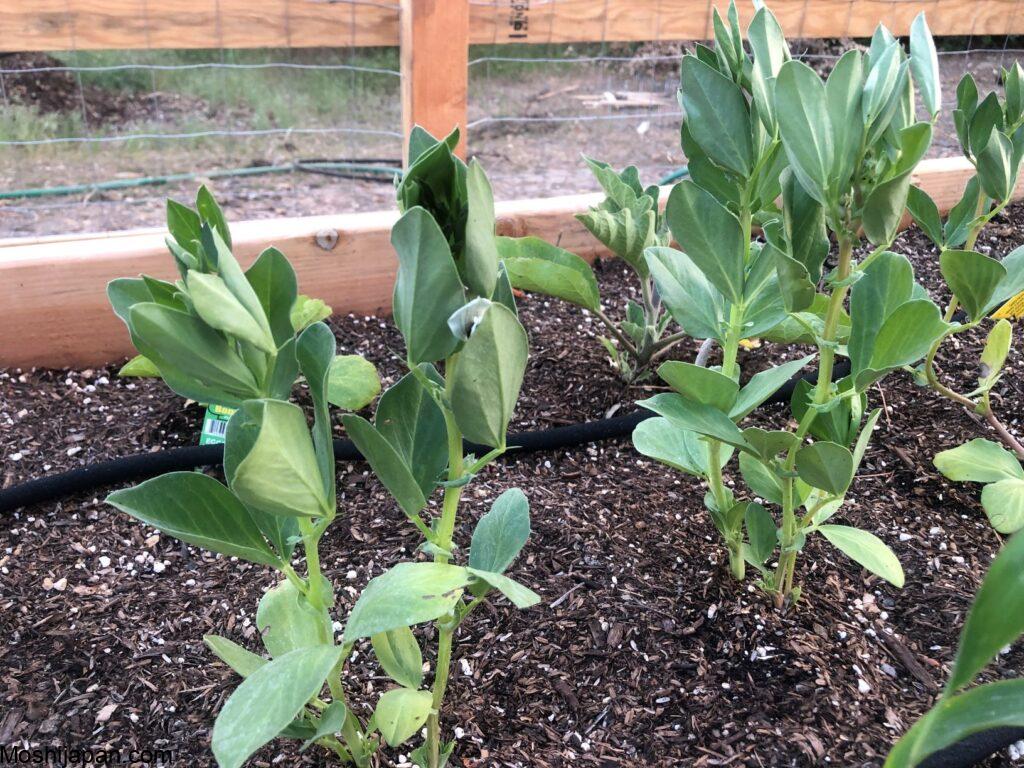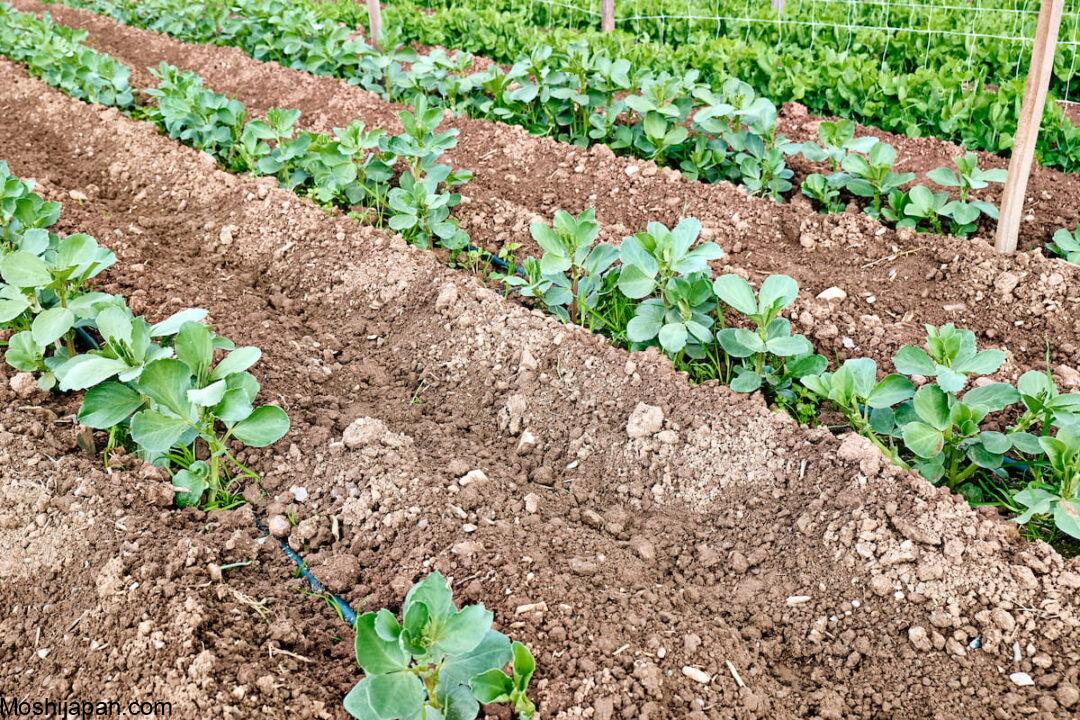A Comprehensive Guide to Pruning and Harvesting Fava Bean Leaves and Flowers
In this detailed guide, we will explore the intricacies of pruning and harvesting fava bean leaves and flowers. Fava beans, also known as broad beans, are a delightful addition to any garden. Their lush foliage and vibrant flowers not only enhance the aesthetics but also offer a delicious and nutritious harvest. Proper pruning and harvesting techniques are crucial to ensure the health of your fava bean plants and maximize your yield. We’ll delve into the step-by-step process, common mistakes to avoid, and tips for success.
Understanding Fava Bean Growth

Before we dive into the pruning and harvesting process, it’s essential to understand the growth cycle of fava bean plants. Fava beans are cool-season crops, typically planted in late winter or early spring. They thrive in temperatures between 60°F to 65°F (15°C to 18°C). Understanding their growth pattern will help you time your pruning and harvesting for optimal results.
1. Planting Fava Beans
Fava beans are usually sown directly in the garden or in containers if you have limited space. Plant the seeds about 1 to 2 inches deep and space them 3 to 6 inches apart. Ensure that your chosen location receives full sun to encourage healthy growth.
2. Germination and Seedling Stage
After planting, fava bean seeds will germinate within 7-14 days. You’ll notice the emergence of small seedlings with two distinctive leaves. These leaves are not the ones you’ll be harvesting; they are the cotyledons, which provide nourishment to the growing plant.
3. Leaf Development
The true leaves of the fava bean plant will start to appear after the cotyledons. These leaves are the ones you’ll be harvesting. They are pinnate with several leaflets and have a vibrant green color.
4. Flowering Stage
Fava bean plants typically begin to flower in late spring or early summer. The flowers are not only beautiful but also an important precursor to the bean pods. They attract pollinators, which help in the bean formation process.
5. Bean Pod Formation
After successful pollination, the flowers will develop into bean pods. These pods will continue to grow and eventually contain the fava beans.
Now that we have a grasp of the growth stages, let’s move on to the specifics of pruning and harvesting fava bean leaves and flowers.
Pruning Fava Bean Leaves

Pruning fava bean leaves is a crucial step to ensure the health and productivity of the plant. By removing certain leaves, you can improve air circulation, reduce the risk of disease, and encourage the plant to focus its energy on producing beans.
1. Identify the Leaves to Prune
The leaves you want to prune are the lower leaves that have started to yellow or show signs of pest damage. Additionally, any leaves that touch the soil should be pruned to prevent soil-borne diseases.
2. Pruning Technique
Using clean pruning shears or scissors, carefully snip off the identified leaves at their base, near the stem. Make clean cuts to avoid damaging the plant. Be sure not to remove more than a third of the total foliage at once, as this can stress the plant.
3. Timing
Pruning should be done during the flowering stage or when the lower leaves show signs of aging. Avoid pruning when the plant is young and actively growing, as this can stunt its development.
Harvesting Fava Bean Leaves
Fava bean leaves are a delightful addition to salads, stir-fries, and other dishes. Harvesting them at the right time ensures the best flavor and quality.
1. Choosing the Right Time
Fava bean leaves are best harvested when they are young and tender, usually in the early flowering stage. Avoid waiting too long, as older leaves can become tough and bitter.
2. Harvesting Technique
Gently pinch the stem of the leaf you want to harvest and pull it away from the plant. Alternatively, you can use scissors or shears to make a clean cut. Be mindful not to damage the adjacent leaves or the plant’s main stem.
3. Harvesting Frequency
Fava bean leaves can be harvested throughout the growing season. Frequent harvesting promotes new growth and ensures a continuous supply of fresh leaves.
Pruning Fava Bean Flowers

While the flowers of fava bean plants are a beautiful sight, pruning them can be beneficial for increasing bean production. By selectively removing some flowers, you can redirect the plant’s energy towards forming larger and more abundant bean pods.
1. Identifying Flowers to Prune
Choose to prune flowers that are at the bottom of the plant or those that appear weak or damaged. Leave some flowers at the top of the plant for pollinators.
2. Pruning Technique
Use clean scissors or pruning shears to snip off the selected flowers. Make clean cuts near the base of the flower stem.
3. Timing
Pruning fava bean flowers should be done once the plant has an adequate number of flowers for pollination. Typically, this is when the plant is in full bloom.
Harvesting Fava Bean Flowers
Fava bean flowers are not just visually appealing; they can also be a culinary delight. These edible flowers have a mild, slightly sweet flavor and can be used in various dishes.
1. Selecting the Right Time
Harvest fava bean flowers when they are fully open and vibrant. The best time is in the morning when the flowers are at their freshest.
2. Harvesting Method
Gently pluck the flowers from the plant, being careful not to damage the surrounding foliage. You can use the flowers immediately in your recipes or store them in a cool, damp cloth in the refrigerator for later use.
Common Mistakes to Avoid
To ensure successful pruning and harvesting of fava bean leaves and flowers, here are some common mistakes you should steer clear of:
1. Over-pruning
Removing too many leaves and flowers at once can stress the fava bean plant and reduce its overall productivity. Stick to a moderate pruning schedule.
2. Neglecting to Harvest
Leaving fava bean leaves and flowers on the plant for too long can result in tough, bitter, or overmature produce. Harvest regularly to enjoy the best flavor and quality.
3. Pruning During Early Growth
Pruning the plant too early, especially when it’s still in the seedling stage, can hinder its growth. Wait until the plant is mature and in the flowering stage before pruning.
4. Using Dirty Tools
Always ensure your pruning tools are clean and sharp. Dirty or dull tools can damage the plant and introduce infections.
FAQ
Q1. Can I eat both fava bean leaves and flowers?
A1. Yes, both fava bean leaves and flowers are edible. The leaves are great in salads and cooked dishes, while the flowers can be used in a variety of culinary creations.
Q2. When is the best time to prune fava bean plants?
A2. Pruning is best done during the flowering stage or when lower leaves show signs of aging.
Q3. How often should I harvest fava bean leaves and flowers?
A3. You can harvest fava bean leaves and flowers throughout the growing season. Frequent harvesting promotes new growth.
Q4. Can I use fava bean flowers for attracting pollinators to my garden?
A4. Yes, fava bean flowers are not only visually attractive but also serve as a great way to attract pollinators to your garden. Bees and other pollinators are essential for the successful development of fava bean pods.
Q5. What should I do with the harvested fava bean flowers?
A5. Harvested fava bean flowers can be used in a variety of culinary dishes. They have a mild, slightly sweet flavor and can be added to salads, omelets, or used as a garnish for various dishes.
Q6. Can I prune and harvest fava bean leaves and flowers at the same time?
A6. Yes, you can prune and harvest fava bean leaves and flowers simultaneously, but be mindful of not over-pruning, as it may stress the plant. Ensure a balanced approach to maintain plant health.
Q7. Are there any specific nutrients in fava bean leaves and flowers that make them valuable for consumption?
A7. Fava bean leaves and flowers are rich in vitamins, minerals, and antioxidants. They provide essential nutrients like vitamin K, vitamin C, and dietary fiber. These nutrients make them a nutritious addition to your diet.
Q8. Can I store harvested fava bean leaves and flowers for an extended period?
A8. It’s best to use harvested fava bean leaves and flowers as fresh as possible for the best flavor and nutritional value. However, if needed, you can store them in a cool, damp cloth in the refrigerator for a short period.
Conclusion
Pruning and harvesting fava bean leaves and flowers can be a rewarding experience, both for your garden’s health and your culinary adventures. By understanding the growth stages of fava bean plants and applying the right techniques, you can ensure a bountiful harvest of delicious and nutritious produce. Remember to be mindful of common mistakes, and always maintain a balance in your pruning and harvesting activities. With this guide, you are well-equipped to make the most of your fava bean garden.
tag
- chicken feed
- how to Keep Chickens Off Your Porch
- How to grow oyster mushrooms at home
- Growing Kale in Pots



0 Comments